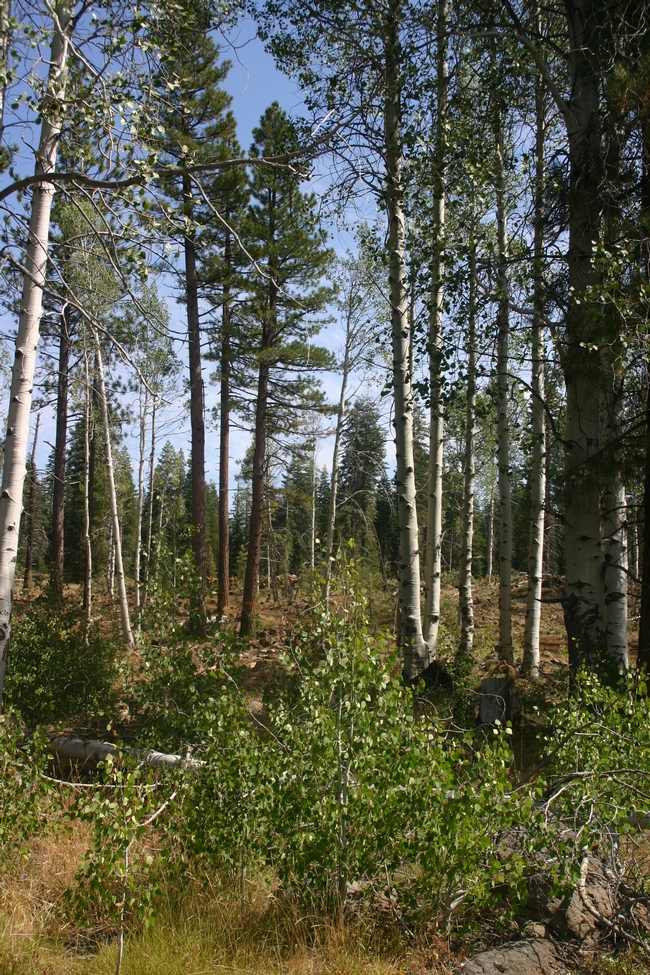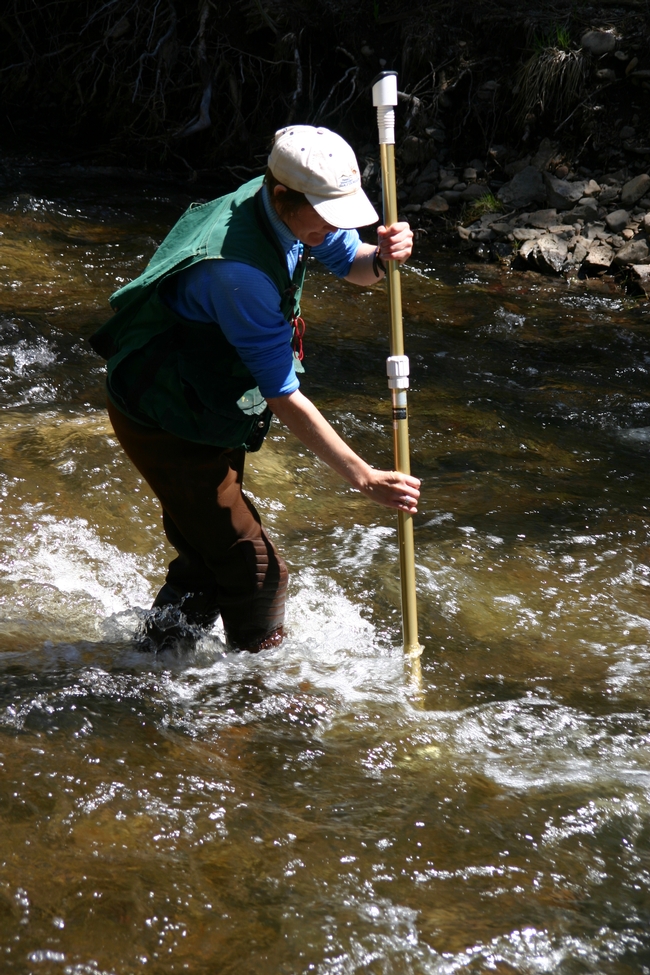Aspen grove restoration doesn’t impact local streams
An aspen grove is an oasis of color and movement in Sierra Nevada forests. Smooth white architecture in the winter gives way to pale green leaves shimmering with the slightest breeze. In the fall, the leaves turn fire gold and flutter to the ground like giant snowflakes.
Besides their beauty, aspen groves are valued for providing myriad ecological services. The groves add species and landscape diversity to the Sierra Nevada. They offer higher water retention than the adjoining conifer forest, plus wildlife habitat and forage for livestock and wildlife.
Aspens are native to the Sierra Nevada and other areas with cool summer temperatures. Groves are typically clonal colonies that grew from a single seedling and spread when roots come to the surface and start a new tree. Each tree lives 40 to 150 years above the ground, but the root system can be much older; one colony in Utah is said to be 80,000 years old.
In the Sierra Nevada, aspen stands have been declining in vigor and sometimes died because of pressures from encroaching conifers, according to Malcolm North, research scientist with the U.S. Forest Service's Pacific Southwest Research Station in Davis.
Aspens thrive in bright sunlight. Without regular fires, conifers eventually shade them out. More than 90 percent of aspen stands in forested areas of California have some conifer shading. Removing conifers with mechanical equipment to increase sunlight in aspen groves is an effective technique to restore stands, but land managers have been reluctant to thin out conifers because of concern about impacts on nearby mountain streams.
A recent collaborative research project involving UC Cooperative Extension, UC Davis and the U.S. Forest Service confirmed that conifer removal to restore aspen stands can be conducted without degrading aquatic ecosystems.
The study was conducted by Bobette Jones, former Ph.D. candidate at UC Davis and currently a USFS ecologist; Monika Krupa, former UC Davis research associate and currently an environmental scientist at Baseline Environmental Services; and Kenneth Tate, UCCE specialist in the Department of Plant Sciences at UC Davis. Research was underway from 2003 to 2010 and published in the December 2013 issue of the journal PLOS ONE.
“This project is an excellent example of the value of collaboration between the university, U.S. Forest Service, and stakeholders to integrate best management practices and best available science for the restoration of critical habitats in our national forests,” Tate said.
The scientists evaluated two aspen restoration projects next to mountain streams in the Lassen National Forest. Prior to conifer tree removal, they evaluated stream temperature, water quality, stream shade, overstory tree canopy cover, aquatic insects, soil compaction and soil moisture. Followup data collection took place two to seven years after the conifers were removed from the stands.
Water quality did not change following the timber harvest. Removing conifers reduced canopy cover, which resulted in an increase of sunlight on the stream, but there was no corresponding increase in water temperature. Soil moisture increased in stands where conifers were removed, compared to aspen stands that were untreated.
“It is a real win-win when we can use contemporary timber management strategies to restore aspen in the absence of a natural fire regime, and also safeguard the health of our aquatic ecosystems,” Tate said.

An aspen stand released from conifer encroachment. The fallen conifers are in the foreground.




Posted by aspen rentals on June 26, 2014 at 1:55 AM